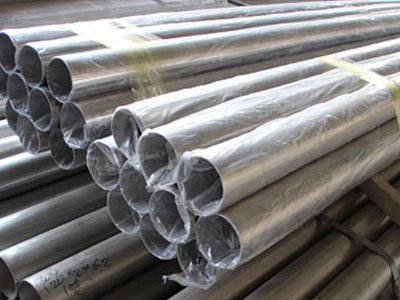
Containing somewhere between 11 and 30 percent chromium, 400 grade stainless steel is low in carbon, usually magnetic, and somewhat less corrosion resistant than 300 series stainless. Often specified by engineers for use in caustic, high temperature environments, series 400 stainless can be easily heat-treated, welded and fabricated using conventional methods.
 The food processing and textile industries specify 400 grade stainless for its ductility and ability to withstand corrosion. 400 grade stainless parts can also be processed to produce a shiny, aesthetically pleasing appearance, which makes the alloy an ideal choice for engineers designing trim and other visible automotive components. A versatile alloy, various 400 stainless steel alloys are also used to make surgical instruments, wear plates and components for steam turbines.
The food processing and textile industries specify 400 grade stainless for its ductility and ability to withstand corrosion. 400 grade stainless parts can also be processed to produce a shiny, aesthetically pleasing appearance, which makes the alloy an ideal choice for engineers designing trim and other visible automotive components. A versatile alloy, various 400 stainless steel alloys are also used to make surgical instruments, wear plates and components for steam turbines.
The 400 series group of stainless steels typically have an 11% chromium and 1% manganese increase, above the 300 series group. This stainless steel series tends to be susceptible to rust and corrosion under some conditions although heat-treating will harden them. The 400 series of stainless steels have a higher carbon content, giving it a martensitic crystalline structure that provides the end product with high-strength and high-wear resistance. The 400 series steels tend to be used in agricultural equipment, gas turbine exhaust silencers, hardware, motor shafts, and more.
Commonly used 400 series of stainless steel varieties containing chromium 18% 430 and chromium 13% of the 410 and 420 stainless steel models, 430 stainless steel models which use the largest. 430 stainless steel model is characterized by low price, thermal expansion coefficient is small, resistance to chloride stress corrosion is better than 300 series stainless steel varieties. 409L SS Control of steel in the C and N content, so the weldability, formability and corrosion resistance is excellent; with 11% Cr, high temperature and room temperature with a BCC structure of ferritic stainless steel; due to the addition of Ti elements, so its high temperature corrosion resistance and high temperature strength is better. 750 ℃ below the available oxidative and corrosion resistance.